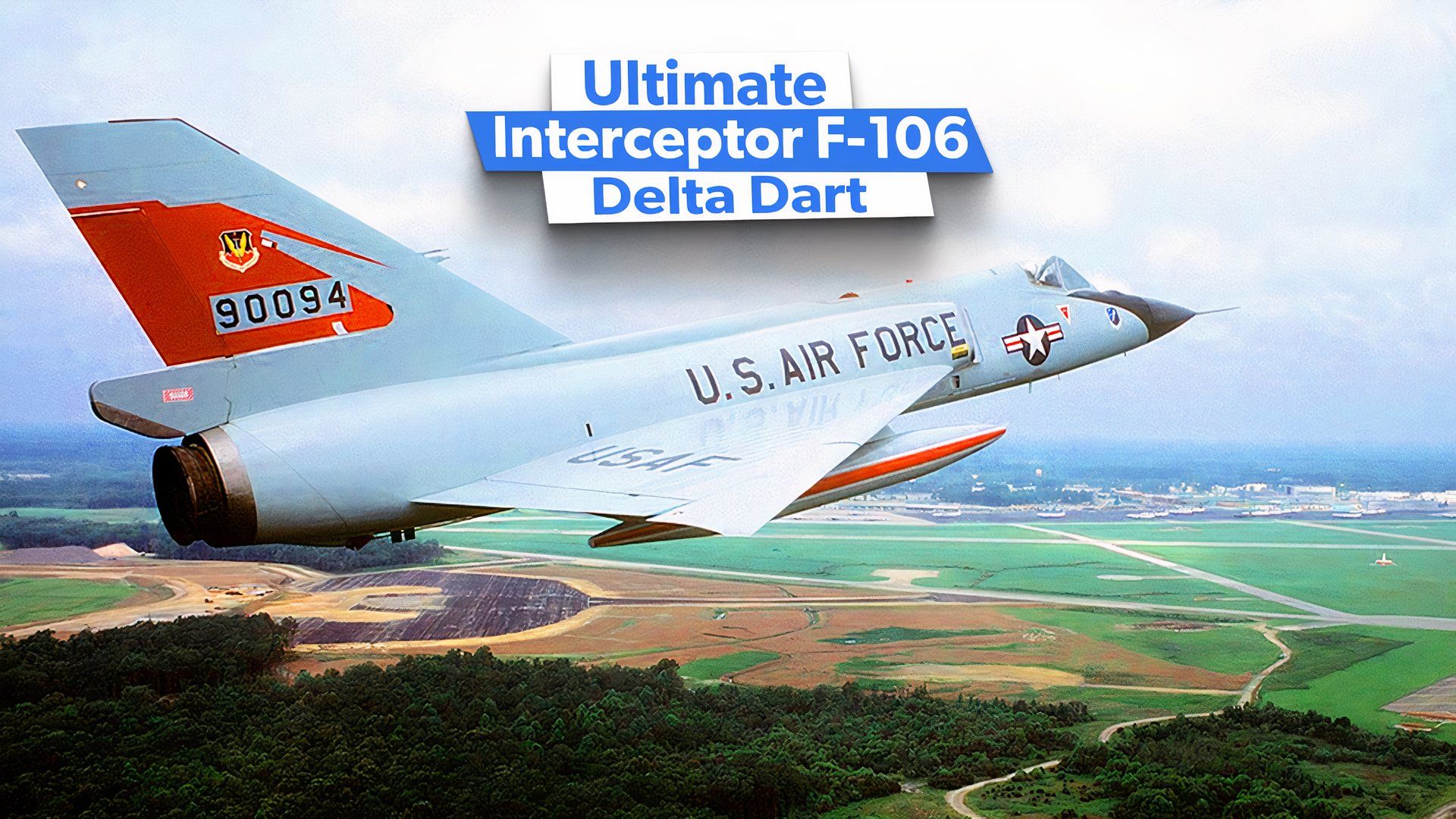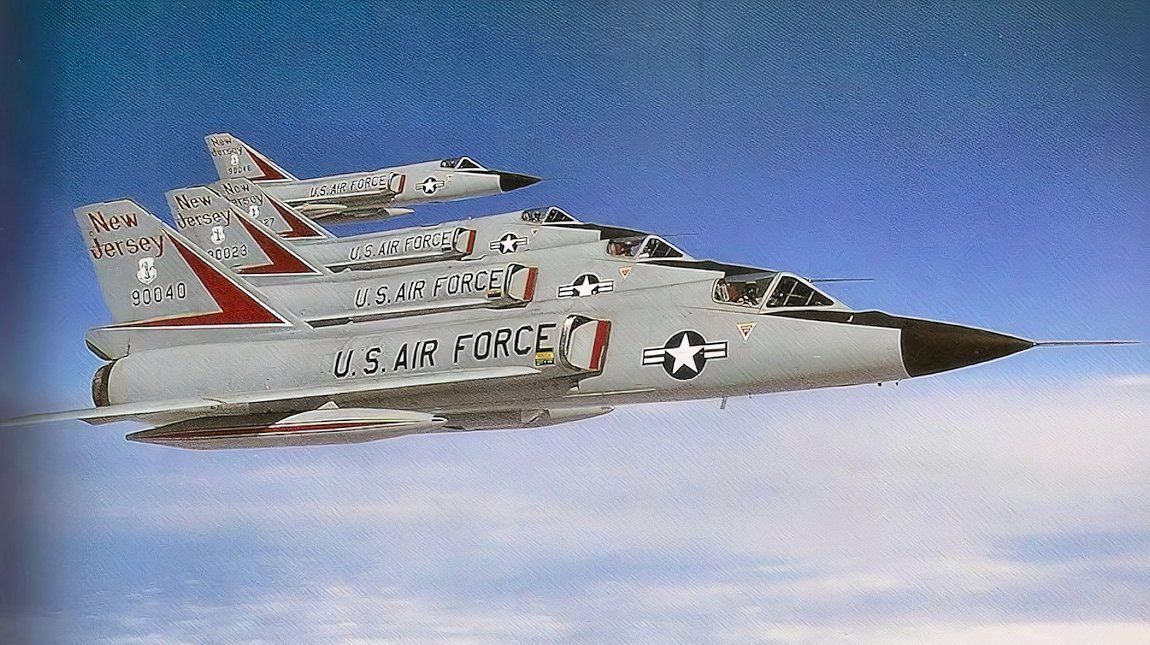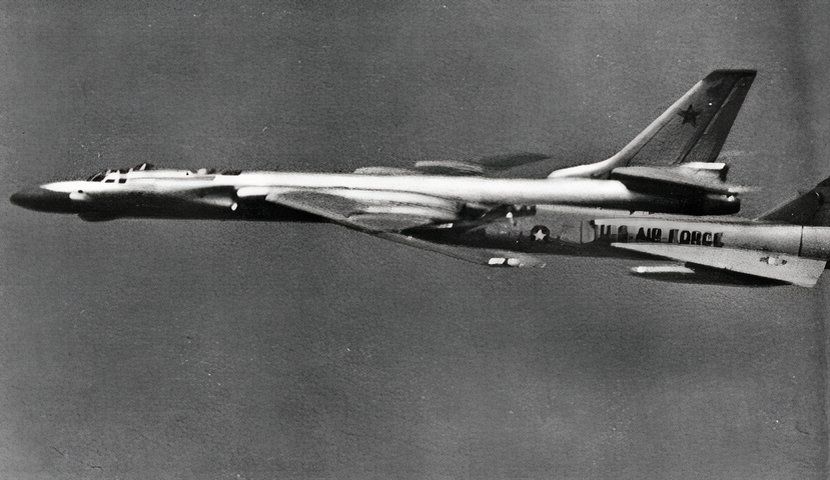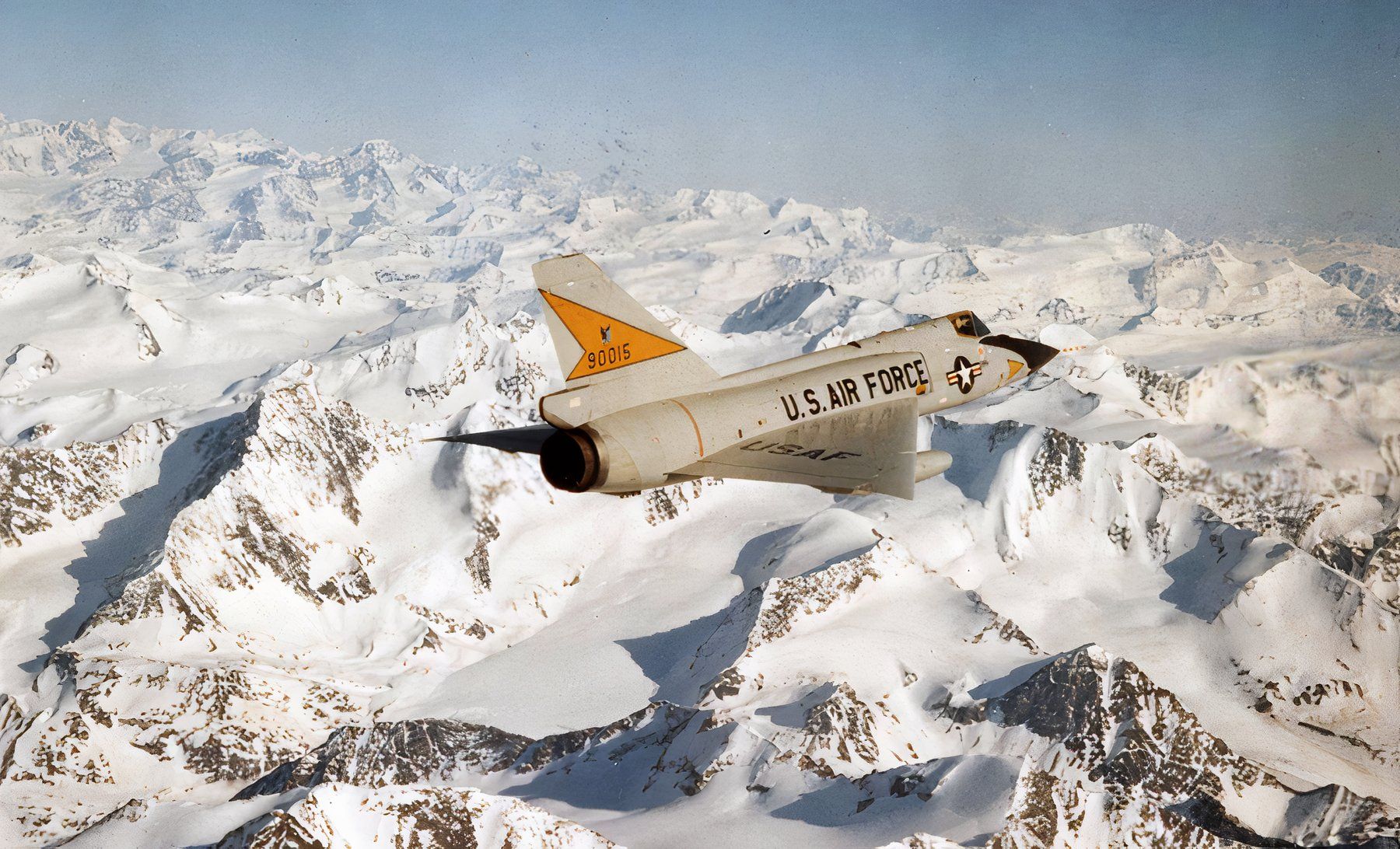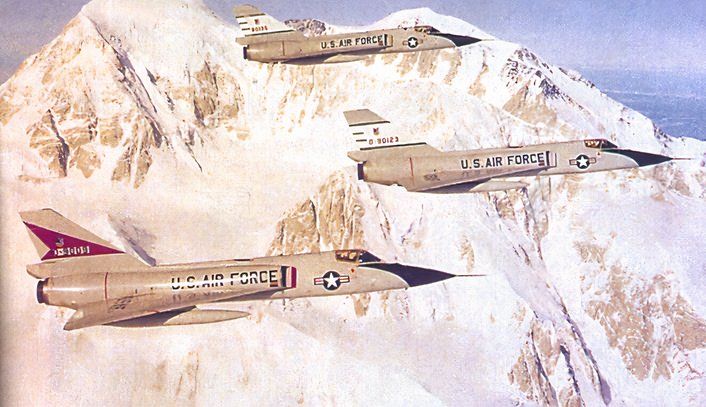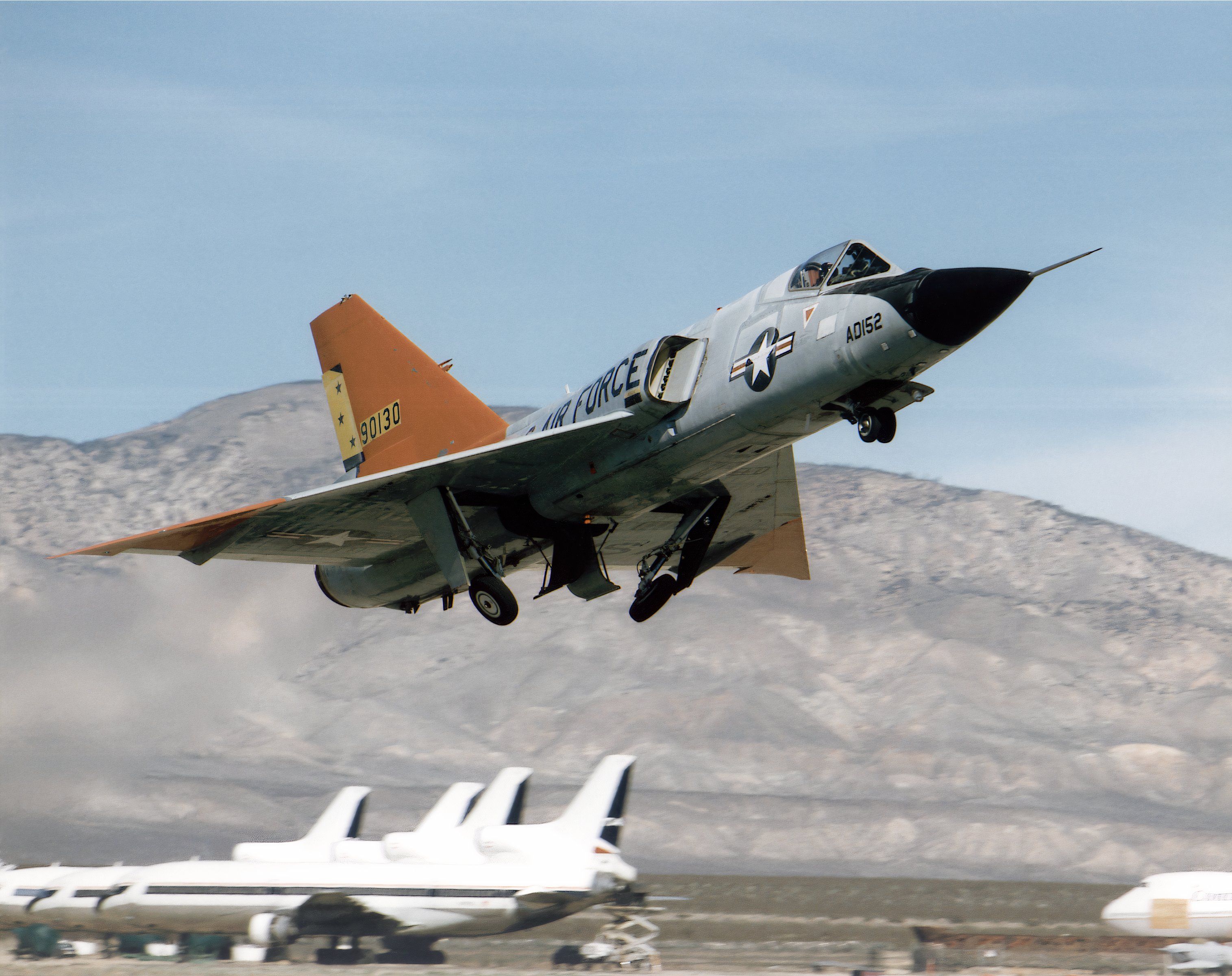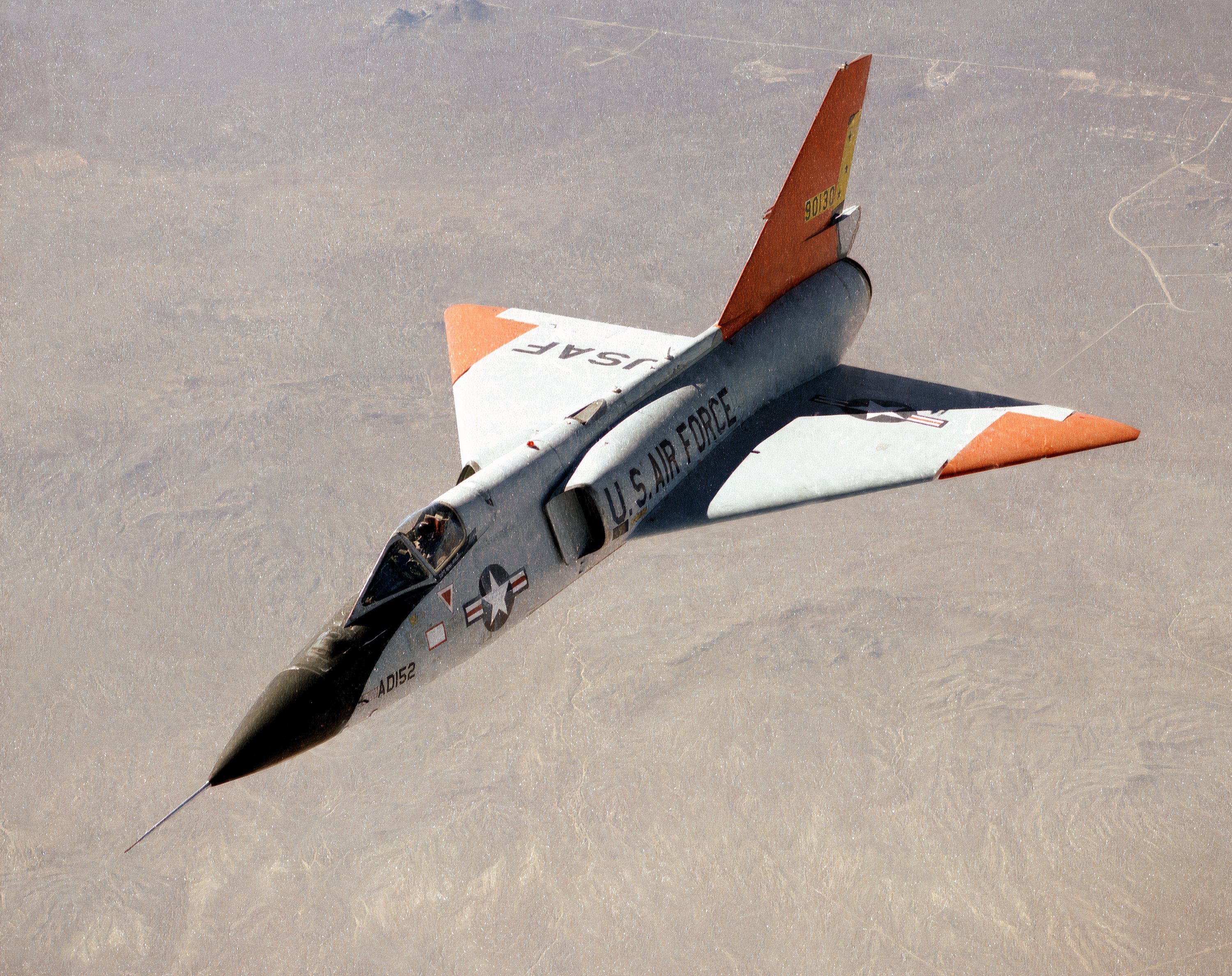The F-106 was a Cold War interceptor. It never saw combat, but it did serve within the US military’s deterrence construct and was deployed overseas. While it served admirably, it met an end unbefitting such a high-class aircraft.
The F-106 Delta Dart is considered to be one of the best all-weather interceptors ever to be designed and put into production during the Cold War era. This aircraft featured a delta wing design, which was common at that time due to its ability to withstand many of the issues experienced by conventionally designed wings at supersonic speeds.
The origins of the F-106 Delta Dart
According to Captain Don Carlson (USAF Ret.) and Lou Drendel:
“The idea for the F-106 was originally conceived by the USAF Board of Senior Officers, in October, 1948. The Board had been studying the need for a new air defense fighter, and had concluded that, given the then current state of the art, the new fighter would have to be developed in two phases. The first model of “The 1954 Interceptor” (as the F-106 was originally called) was the F-102A, and was dubbed ‘the Interim Fighter'”.
Following extensive structural changes and the addition of a much more powerful engine, the F-102B was redesignated the F-106. The new engine was the J75, the same engine as the Republic F-105 Thunderchief, making the “Thud” and the F-106 the two most powerful single-engine aircraft in the world then (according to Carlson and Drendel).
The first F-106 rolled off the production line in 1956, and its first flight was on December 26, 1956. Deliveries to the United States Air Force
commenced in July 1959. Unfortunately, the duration of production of the F-106 was quite short, ending in 1960.
A total of 340 F-106 Delta Darts were manufactured.
Specifications for the “Ultimate Interceptor”
|
Specifications |
Numerical Data |
|---|---|
|
Crew |
1 |
|
Length |
70 ft. 9 in. |
|
Height |
20 ft. 4 in |
|
Wingspan |
38 ft. 4 in |
|
Cruising speed |
650 mph |
|
Maximum speed |
1,525 mph |
|
Range |
1,500 statute miles |
|
Ceiling |
53,000 ft. |
|
Armament |
One AIR-2A Genie air-to-air nuclear missile plus four AIM-4 Falcon air-to-air missiles. |
|
Powerplant |
One Pratt & Whitney J75-P-17 of 24,500 lbs. thrust with afterburner |
Details provided by the USAF
Operational roles of the F-106
Flying high over South Korea
While the F-106 did not see combat duty, in 1967, 400 personnel and 18 aircraft of the 318th Green Dragons deployed to South Korea, to Osan Air Force Base. En route, the F-106s received midair refueling. This deployment was in response to the North Korean capture of the USS Pueblo and 83 of its crew members, one of whom was killed during the attack. While deployed to Korea, the F-106s flew escort missions for EC-121s.
The EC-121 aircraft is an early warning and surveillance aircraft that was operational with both the US Navy and US Air Force from the 1950s until the late 1970s. It aided US fighters in locating and attacking enemy fighters, directed US aircraft to refuel tankers, and guided search and rescue aircraft to downed pilots.
Keeping a watchful eye on the frigid North
At the beginning of the
Cold War
, US military planners viewed North America as “Wide Open on Top.” By February 1946, what later became known as “The Polar Concept” was developed and implemented. This concept placed much greater defense priority on the North Atlantic and Alaska to head off any threat from Soviet Russia.
By the late 1950s, Alaska’s air defense infrastructure was developed both in scope and depth to fortify America’s northern reaches. This provided America’s northern frontier with early warning and interception capabilities.
An aspect of this infrastructure was the deployment of the F-106, which provided the necessary capabilities for intercepting Soviet aircraft should they stray into US airspace. In this capacity, the F-106s were based at King Salmon Air Station at the northern end of the Alaska Peninsula. This allowed them to patrol the Bering Sea and the Northern Pacific Ocean.
The F-106s were based in Alaska from 1963 to 1970.
Between June 1, 1983, and August 1, 1988, the fleet of F-106s was incrementally retired and sent to the Military Storage and Disposition Center in Arizona.
From first-string to target drone
From the late 1980s on, the F-106s had a new and undignified life (and probably heart-breaking for former pilots) as target drones. Thus, beginning in 1986, the remaining surplus F-106s were placed under the “Pacer Six Program” by the Ariel Targets Squadron.
Once in this program, these aircraft were used for weapons testing and development programs, surface-to-air gunnery/missile crew training missions, and air-to-air combat pilot training missions.
According to a 1999 Forecast International report on unmanned vehicles, the US Air Force procured the QF-106 (the drone designation) in the following years and quantities: FY 1989 (48), FY 1990 (48), FY 1991 (48), and it is believed that 40 more QF-106’s were requested in FY 1993.
Honeywell was the prime contractor for the conversion to QF-106 drones, and Tractor Flight Systems Inc. was the major subcontractor for full-scale development.
The final F-106 was destroyed in January 1998.
What could have been
The F-106 was a beloved aircraft by those who flew it, and it was considered one of the finest combat aircraft built during the Cold War. To see them go out as target drones does seem to be an unfitting end. But the Air Force needed them in that capacity, and unfortunately, that is how the story ended for the F-106 turned QF-106.
Another interesting facet to consider, and it’s a hindsight-is-20/20 thought, but wouldn’t those aircraft have been better served as trainer aircraft for the US Air Force? Today, the Air Force’s primary training aircraft is the T-38 Talon, and it is only available for a limited amount of time due to engine issues, its age, and dwindling spare parts.
Had the Air Force been more forward-thinking, the F-109s could have supplemented the T-38s and lived on to train future pilots for the Air Force. This would have taken all the stress and heavy lifting off of the T-38 fleet and allowed the F-109 to fly off into the sunset with much more dignity.

